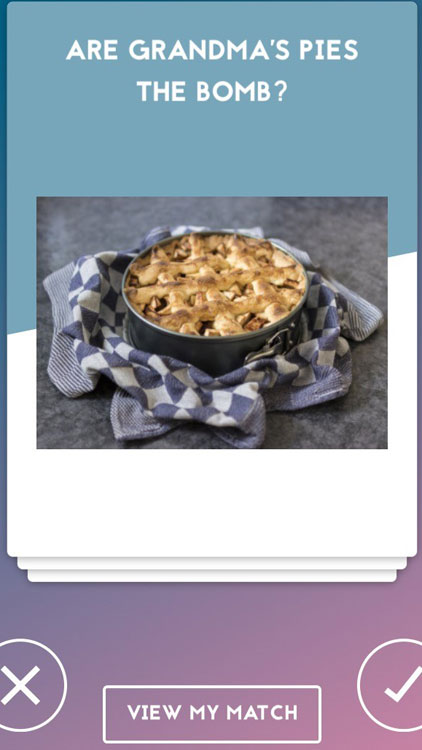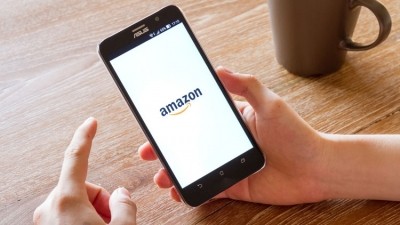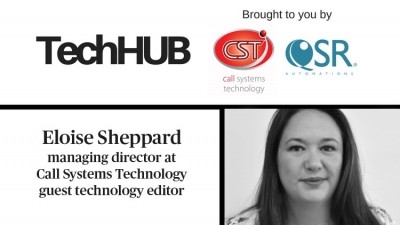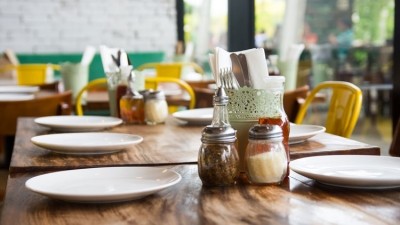Managing the data deluge

Operators are continually being told about the importance of data capture and how valuable customer information is in these competitive times, but exactly how they collect it and what they do with it is another matter. And, with the General Data Protection Regulation (GDPR) soon to come into force, putting a greater onus on businesses to ensure they protect their customer data, things are only going to get harder for companies looking to harness such data.
Customer data has become the lifeblood of the restaurant industry, with businesses using the information they have captured to improve customer service, build loyalty and create more targeted marketing campaigns. And, with more intuitive and sophisticated technologies being developed, businesses are able to use their customer data in different and even more effective ways.
But how are companies managing the large amount of data they collect and what are they planning to do with it to get the edge in an increasingly crowded and competitive market?
Restaurant businesses recognise the importance of collecting data, but it is getting the right kind of information that will inform future business decisions that can be tricky.
“We are not getting enough data – it is there but we are not getting to it,” says Doug Wooten, head of IT at Azzurri Group, which operates the Zizzi, ASK Italian, Coco di Mama and Radio Alice restaurant brands. “We know what we want but getting that data is tricky.”
Restaurant groups are getting better at collecting data, however, says Mark Robertson, head of IT at Benugo. “The industry is being more sensible about the data it is trying to collate,” he says. “Marketeers are now looking for relevant data rather than just casting a net over 500,000 contacts.”
Loyalty and recognition
Much of the customer data that restaurants collect is used to build brand loyalty, but while they have more information than ever before at their disposal to do this, they are finding that customers are becoming increasingly disloyal.
“There is declining loyalty – it is easy for customers to switch in and out of brands,” says Celia Pronto, chief digital officer at Casual Dining Group, owner of the Café Rouge, Bella Italia and Las Iguanas brands. “Consumers are sharing more but there is a decline in trust in organisations – they no longer believe what [companies] tell them.”
Instead, consumers are increasingly turning to review sites to learn more about businesses, says Pronto. “Everything is driven by reviews. Reviews have become the de facto research process. They drive what customers want.”
With the rise in power of review sites such as TripAdvisor, being able to control the message is not only becoming harder but increasingly important. The onus is on operators to harness digital in sophisticated ways that speak directly to the customer, and encourage engagement and loyalty.
Bar group Be At One is one such company that is achieving this, through the use of its app. Launched five years ago, the app has had a big impact on loyalty and helps drive custom, particularly at quieter trading periods, says chief operating officer Andrew Stones.
"Data is important, but guests are getting more cautious
about how their data is being used.
We need to find more creative ways of
collecting it in a smarter way.”
According to Stones, app users make more regular visits to its bars: a standard guests visits on average four times a year, compared with 11 times for the average app user.
The reason for this increased frequency is that Be At One’s app offers incentives to visit through the ‘Appi Hour’ aspect of the app. Customers get a code from a member of staff, input it to the app and a one-hour countdown then begins during which time they can benefit from discounted drinks.
The app also asks questions of its guests through its Drinkr aspect, a Tinder-style function that asks users to swipe left or right to questions about the kinds of drinks and music they enjoy. As well as asking whether they like drink flavours such as citrus, sweet, smokey and coffee, other questions include ‘is the best hangover cure a glass of cranberry juice?’, ‘are dogs better than cats?’ ‘love weekends in the countryside?’ and ‘hate swimming?’.
“We want to understand what our guests want and encourage them to visit. Data is important, but guests are getting more cautious about how their data is being used. We need to find more creative ways of collecting it and collate guest preferences in a smarter way.”
Drinkr allows the company to build taste profiles of its customers so, for example, if it finds that 70% of users favour citrus cocktails, it can develop a new citrus-based drink and communicate it to those customers and offer a discount to encourage trial. “It gives us a really good indication of the drinks our guests like,” says Stones.
“All of that info goes into our database. From a marketing perspective, it is really important to be able to tailor every single message we send out to our guests. The days of sending mass emails to 300,000 people, where every message is the same, are gone.
“Building loyalty is more than a bar or a brand, it is personal. We are trying to use data to ensure everything we do and send to a customer is relevant. We are trying to treat our guests as friends, and as that friendship grows so does the loyalty. It helps us to cross-sell and upsell.”
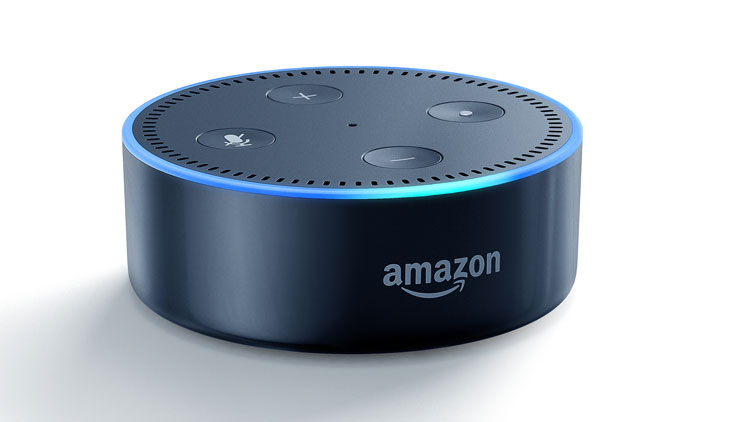
Mapping the customer journey
Digital technology is not just helping increase loyalty. Restaurant groups are looking to harness lots of different types of technology to vastly improve the customer experience from the moment they book right through to after
their meal.
Pub and restaurant group Mitchells & Butlers underwent a three-year digital transformation from back of house to front of house to improve its customer engagement, with very promising results.
The company operates 16 brands, including Miller & Carter, Harvester and Toby Carvery across more than 1,600 bars and restaurants and employs 48,000 staff. It focused on what Alison Vasey, head of service transition, called guest-obsessed technology, working with kitchen management and table management systems, designed to free up customers’ time and improve their experience of the brands.
The company migrated all of its 16 different brand websites onto a single platform and introduced real-time pricing and the ability to make a reservation and order a takeaway online. It also introduced new tills, hand-held ordering and integrated payment. Following the three-year rollout, the company saw a threefold increase in tables booked online, with 50% of customers now booking online.
Vasey has a vision for the future that harnesses various technologies to make the customer dining experience as smooth as possible – some aspects of which it already offers. Using the example of someone booking into a Harvester for a birthday meal, Vasey maps out a scenario that allows the person to make a booking via a chatbot and who then gets sent a link to download the restaurant app. Through the app, the person can see a map of the dining room and choose their table, send invitations to family members and let them look at menus in advance – with those who have allergies only able to see dishes that they are able to eat.
"If they are an app user a notification could be sent to the bartender
with a picture of the customer appearing on their watch.
The question is ‘is that creepy or great customer service'"?
They could also add their card details for easy payment, pre-order drinks for the table in advance and even have the option of ordering a taxi to pick them up on the day. Other services offered through the app might include linking up to a car’s sat nav so a customer would be able to inform the restaurant if they are going to be late, with the restaurant able to respond.
Once in the restaurant, at-table technology would take over with guests able to order food on a tablet, with the option to create bespoke dishes – such as build-your-own burger – and see how long their order is taking via a food tracker. The tablet could also allow each diner to pay for their own food by simply dragging images of what they ordered into their own digital wallet. Following the meal, the diner would be able to provide feedback on the app, and have money credited to their account as a thank you.
This vision of the future customer journey isn’t that far-reaching, with a lot of the technology already available to do this. However, Vasey admits there are still barriers that need to be overcome to make it a reality. “There are still some big questions that need to be answered,” she says.“How do you get pay-at-table to work and how do you inform customers about mobile payments? How do you get customers to engage with technology?”
Vasey also points to the pre-ordering of food as a challenge. “How do we ensure that food that is pre-ordered online is available on the day? Customers are less tolerant if something they have already ordered is not available.”
To make this vision of the future work, disparate technologies need to be able to speak with each other, something that Tom Weaver, chief executive of tech company Flyt, says is essential. He cites voice technology and chatbots as potentially the next big customer interface, but says that they must all work in tandem.
“There’s Google Assistant, Siri, Cortana, and Amazon’s Echo with Alexa, which was its best-selling product this Christmas.
There’s lots of take-up of this technology, but integration is key. One day people might be booking through Siri, the next time through Alexa – it has to happen no matter what interface they use. You need to plan for a
world of increasing complexity.”
Sophisticated technology
Be At One is also looking to technology to improve the customer experience and to reward loyalty rather than just encourage it. Be At One’s Stones says the company is looking at the use of iBeacons that send alerts when certain customers enter their premises.
“Do we have the technology in the business to fully understand who our high-net-worth guests are through app usage? If a regular customer drinks in our Lyceum bar, all the bartenders will know them. But if they then
visit a Birmingham Be At One, the staff there won’t know who they are.”
However, if they are an app user, says Stones, a notification could be sent to the bartender there, with a picture of the customer appearing on their watch, so that they can recognise them and offer them their favourite drink on the house. “The question is ‘is that creepy or great customer service?’”
“There is now a real fight to get
consumers to put anything new
on their phones”
So far, Be At One has only been trialling this in-house but Stones hints that it might soon take the plunge and make it customer-facing. “The tech is there. Using iBeacons, Wi-Fi knowledge and info on apps can allow us to surprise and delight our guests, and you can do it in quite a natural way. But you have to be very careful.”
Be At One’s success with its app might be hard to replicate, however, suggests Flyt’s Weaver, who voices caution to any business looking to develop one.
“There is now a real fight to get consumers to put anything new on their phones,” he says. “Many users don’t download new apps every month, and if they do it’s only one or two. In 2018, your digital strategy has to be beyond apps. You need to think about the platforms that your customers engage with.”
Weaver points to non-restaurant-specific platforms that are taking a piece of the pie, including Snapchat, which is processing restaurant reservations, Amazon, which is moving into food delivery, and traffic and navigation app Waze, which he says is moving into the order-ahead market. “The question is, ‘how do we deal with all these guys?’”
Predicting what tech will have a major impact on restaurants in the future is no easy task. Weavers says that restaurant tech has a life cycle of around 10 years. “If you look at your EPoS system now, it is hard imagine what it will look like in 10 years,” he says. “It is only 10 years since the iPhone was launched, but it has pretty much changed society.”
But while he can’t predict how future technology might manifest itself, he is convinced of its growing impact in the restaurant sector. “Ten years ago, the biggest companies in the world were mostly in oil, today they are all tech companies. Tech is in the ascendancy.”
This article is based on information and insight presented at last month’s Hostech event, an annual one-day conference in London for the hospitality sector brought to you by Restaurant, BigHospitality, MCA and The Morning Advertiser and sponsored by Addleshaw Goddard, Data Therapy, Flyt, Sage, Tevalis and Yumpigno.
For updates about next year’s event, and to book your place early, email Hester Doran at hester.doran@wrbm.com.
